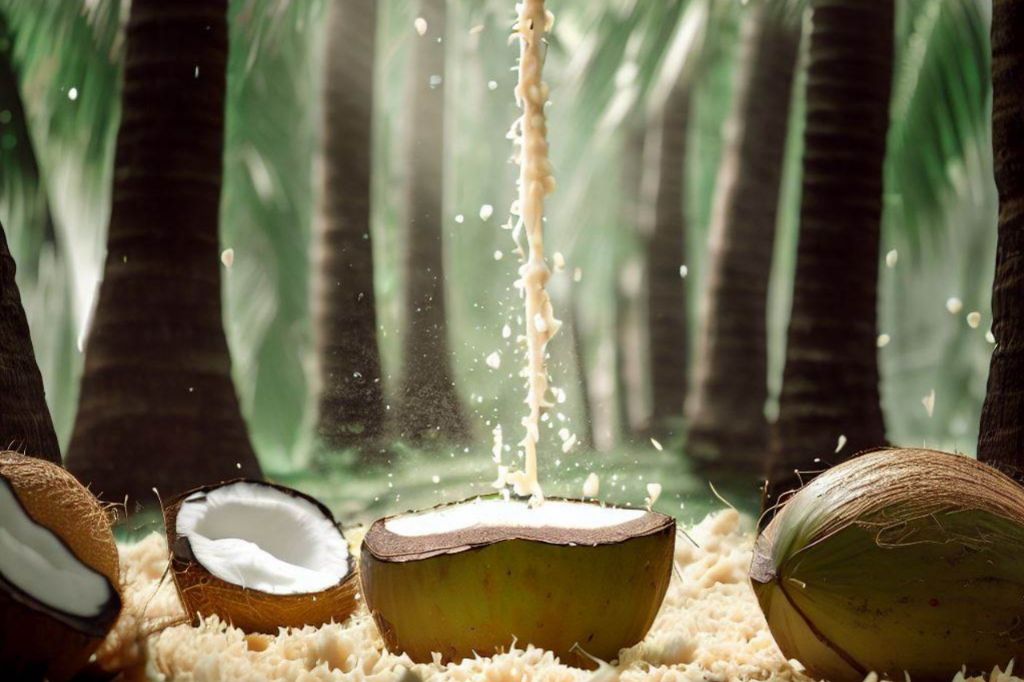What Are Natural Candles Made Of?
Natural candles are candles made from natural, non-petroleum based waxes and vegetable oils as opposed to paraffin wax which is derived from petroleum. They often use natural dyes and essential oils as well. The popularity of natural candles has been growing in recent years due to consumer desire for more eco-friendly and non-toxic products. According to research, the global candle market was valued at $8.38 billion in 2018 and is expected to reach $13.72 billion by 2026 (Source). As consumers become more conscious of the ingredients in the products they bring into their homes, natural candles provide an attractive option over conventional paraffin candles.
Ingredients in Natural Candles
Natural candles are made with ingredients derived from plants, animals, and minerals rather than synthetic chemicals. The main ingredients in natural candles include:
Beeswax
Beeswax is a natural wax produced by honey bees. It has a sweet, honey-like scent and is a common base ingredient in natural candles. Beeswax allows natural candles to burn longer and cleaner than paraffin wax candles (source).
Soy Wax
Soy wax is made from hydrogenated soybean oil. It is a renewable and biodegradable vegetable wax. Soy candles burn slower and cooler than paraffin wax candles. The burn time is not as long as beeswax, but soy wax is often more affordable (source).
Coconut Wax
Coconut wax comes from the oil of coconut palms. It is a creamy, natural wax with a high melting point, allowing natural coconut wax candles to retain their shape in warm environments. Coconut wax also makes container candles that release nicely from the sides (source).

Essential Oils
Essential oils are natural oils extracted from plants that provide fragrance for candles. Common essential oils used include lavender, eucalyptus, citrus oils, mint, pine, etc. Essential oils have different scents that can create calming, energizing, or seasonal aromas in natural candles (source).
Vegetable Oils
Some natural candles incorporate vegetable oils like olive, sunflower, palm, or grapeseed oil. These oils allow easy pouring of the melted wax and help the wax adhere to the wick (source).
Natural Dyes
Candle makers can add natural dyes extracted from fruits, vegetables, minerals, and herbs to color the wax. Common natural dyes include turmeric, beet powder, rosemary, cinnamon, and charcoal (source).
Beeswax
Beeswax is a natural wax produced by bees. It is secreted from special glands within the bee’s body and used by bees in the construction of their honeycombs. When collected by beekeepers, beeswax offers several benefits as a candle ingredient.
Beeswax candles have a therapeutic sweet honey aroma and produce negative ions when burning which help purify indoor air. Beeswax has a high melting point so candles hold their shape as they burn and don’t release toxic petrochemicals into the air (source). The natural scent comes from honey and flower nectar pollen, absorbed by bees as they gather wax. Beeswax candles have been used for centuries due to their clean burning properties and calming honey aroma.
Beeswax provides structure to candle wicks and allows them to burn slowly and evenly. The rigidity helps candles retain their shape without requiring additional fillers. Beeswax has natural waterproofing properties that protect candle wicks from extinguishing. Compared to paraffin wax candles, beeswax candles are cleaner burning and considered a renewable, sustainable ingredient from beekeepers (source).
Soy Wax
Soy wax is one of the most popular natural wax options used in candle making. Soy wax is made from soybeans, which are a renewable crop that can be easily grown again after harvesting. This makes soy wax an eco-friendly and sustainable choice. Additionally, soy wax is biodegradable, meaning it will break down naturally over time without causing harm to the environment.
The main benefits of soy wax are that it is clean burning and lasts longer than traditional paraffin wax candles. Soy wax has a lower melting point, so the wax pools evenly as the candle burns, which helps the candle burn longer. Soy candles also don’t release any toxic chemicals or smoke when burning like paraffin candles sometimes do. This makes soy wax an excellent choice for people sensitive to scents or concerned about indoor air quality.
Some popular soy wax candle brands that use soy wax include Illuminate Candle Co. and Polo Beauty Group. These companies tout the benefits of soy wax and its renewable, biodegradable nature.
Coconut Wax
Coconut wax is commonly used for natural candlemaking due to its natural origins and eco-friendly nature. Coconut wax is produced from the oils of coconut palm trees and possesses certain beneficial properties that make it ideal for candlemaking.
The use of coconut oil as the main component gives coconut wax candles a smooth, glossy surface and an exceptional ability to hold and release fragrance. The natural scent throw of coconut wax is very strong compared to other waxes. The small wax crystals allow more surface area for fragrance oils to adhere to, giving excellent hot and cold scent throw. This allows coconut wax candles to fill a room with fragrance more effectively than other natural wax options.
According to The Minch, coconut wax also stands out for its clean burn and being non-toxic. The wax burns slowly and evenly without excessive sooting. This produces less soot emissions and causes less residue buildup on surfaces around the candle. Coconut wax candles are a great eco-friendly and natural candle choice.
Essential Oils
Natural candle makers often include essential oils for their therapeutic benefits and to add fragrance from natural plant sources. Essential oils are volatile aromatic compounds extracted from plants like lavender, eucalyptus, peppermint, and tea tree. Popular essential oils used in candle making include lavender, lemongrass, peppermint, eucalyptus, rosemary, lemon, sweet orange, grapefruit, cedarwood, and tea tree (source). Lavender oil in particular is commonly used for its relaxing, stress-relieving properties.
Essential oils can provide aromatherapeutic effects when inhaled or topically applied. When used in candles, the aromatic compounds are released into the air through the burning process. This allows the essential oil’s scent and potential therapeutic benefits to fill the surrounding space. Candle makers should be mindful of blending essential oils that complement each other and create a pleasing fragrance. Using too much of a single oil or incompatible scents can lead to an unpleasant or overwhelming smell from the candle.
Vegetable Oils
Vegetable oils like soybean, canola, and sunflower oil are commonly used to make natural candles. Unlike paraffin wax which is derived from petroleum, vegetable oils come from renewable plant sources. When used in candle making, vegetable oils can enhance burn quality. The oils help the wax melt at a lower temperature to reduce soot and provide a cleaner burn. Popular vegetable oils for candles include palm oil, rapeseed oil, soybean oil, sunflower oil, and coconut oil. Using vegetable oils allows candle makers to create natural products free of synthetic ingredients. The oils are derived from plants, making them a renewable and eco-friendly choice over paraffin wax. Vegetable oils produce candles with excellent fragrance throw and clean burning properties.
[source: https://www.mycandlemaking.com/candle-making-classes-toronto-ontario/]
Natural Dyes
Natural dyes are a key component of natural candles. Unlike artificial dyes, natural dyes are sourced from nature and provide a gentle, non-toxic coloring option.
The most common sources of natural dyes for candles are fruits, vegetables, and herbs. For example:
- Turmeric powder produces a warm golden-yellow dye.
- Beetroot juice creates a rich pinkish-purple color.
- Blueberry juice dyes wax a nice blue hue.
- Paprika adds an orangey-red color.
- Spinach powder infuses wax with a natural green dye.
Using natural plant-based dyes is an eco-friendly alternative that complements the natural vibe of unscented or lightly scented candles. The dyes gently color the wax without compromising the pure burning experience.
Benefits of Natural Candles
Natural candles provide many benefits compared to synthetic candles made from paraffin wax. Here are some of the key advantages of using natural candles:
Non-toxic – Beeswax, soy wax, and other natural waxes do not release toxic chemicals into the air when burned like paraffin candles do. The fragrances from essential oils are safe and do not contain synthetic chemicals.
Biodegradable – Materials like beeswax and soy wax will break down naturally over time. Paraffin wax is a petroleum byproduct that takes years to degrade.
Renewable – Beeswax and soy wax come from renewable sources and are sustainable. Paraffin wax is derived from non-renewable crude oil.
Ethical production – Natural candles are often produced more ethically with fair trade practices. Synthetic candles may involve unethical practices.
Allergen-free – Plant-based waxes avoid common allergens like petroleum. Essential oil fragrances also have fewer allergens than synthetic fragrances.
Overall, natural candles made from beeswax, soy, and other plant-based ingredients are better for human health and the environment compared to synthetic paraffin candles (Ohcans, 2022). Choosing natural candles is a simple way to avoid toxins and support ethical, sustainable products.
Natural Candle Brands
There are many popular brands that specialize in natural candles made from soy, beeswax, essential oils, and other natural ingredients. Some of the top natural candle companies include:
Yankee Candle – Founded in 1969, Yankee Candle is one of the most well-known candle brands. They offer a wide range of natural soy candles, including their Natural Home and Simply Home lines made from natural soy wax (https://www.townandcountrymag.com/style/home-decor/g32677676/best-soy-candles/).
WoodWick – WoodWick is known for their unique wooden wicks that crackle while burning. They have an extensive line of natural soy candles made from 100% natural wax and essential oils.
Village Candle – Village Candle uses natural waxes and essential oils to create their candles. Their soy wax candles are hand poured in Vermont and they source beeswax from regional apiaries whenever possible.
Other popular natural candle brands include Nest Fragrances, Pacifica, and Votivo. Most major candle companies now offer natural candle lines due to increasing consumer demand for eco-friendly and non-toxic products.




